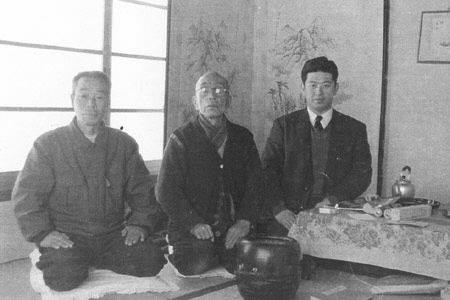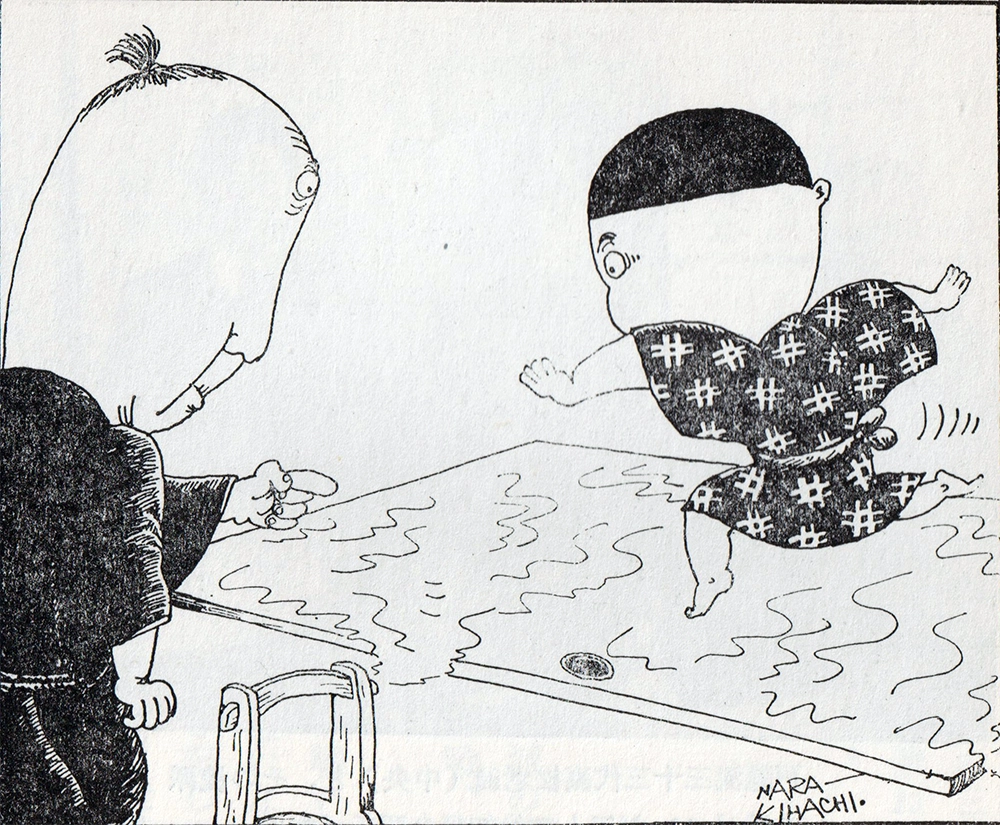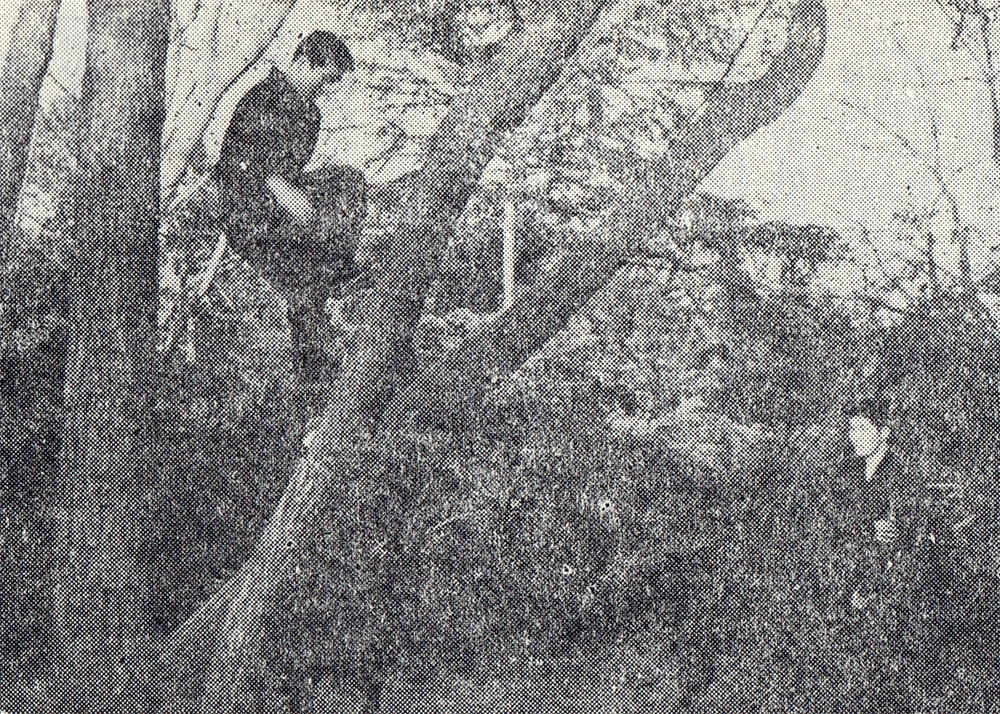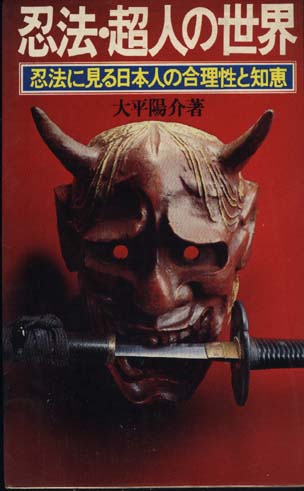Qualifications for Becoming a Ninja (Page 43-47) from the book Ninpō Chōjin no Sekai by Ōhira Yōsuke.

Returning to the main topic, becoming a ninja required specific innate qualities. Even those born into a shinobi family were not automatically chosen to inherit the tradition if they lacked the necessary aptitude. Instead, a suitable candidate would be sought out, rigorously trained, and granted formal certification (inka). Hatsumi Masaaki of the Togakure-ryū trained for 15 years under the 33rd Head, Takamatsu Toshitsugu, before inheriting the position as the 34th Head. If no suitable successor was found, the secret manuals and ninja tools would be completely destroyed, leaving no trace. Fujita Seiko explained that this practice is why so few authentic secret manuals have been passed down to later generations.
Fujita Seiko himself was born into the Wada Igamori lineage, one of the 53 Kōga samurai families. His grandfather, the 13th Head of Kōga-ryū, recognized Seiko’s (real name: Isamu) aptitude and, bypassing Seiko’s father, designated him as the 14th Head. From the age of six, Seiko underwent intensive training for this role.
What does “aptitude” mean in this context? The following five criteria were considered essential:
- A person with strong mental and physical endurance.
- A person of upright character.
- A person indifferent to all desires.
- A person who is meticulous yet bold, with quick thinking.
- A person with an unremarkable physique and appearance.
Mental strength and moral integrity were particularly emphasized, likely to prevent the misuse of ninjutsu. Once a candidate’s aptitude was confirmed, they underwent tests to assess their motor skills, patience, and lung capacity, such as the following:

- Crossing Wet Sliding Doors (Fusuma): Water was sprinkled on sliding paper doors, and the candidate had to walk across them. Those who tore the paper by stepping through failed, while those who crossed quickly without damaging it passed.
- Submersion Test: A candidate’s head was submerged in a barrel filled with water. Those who quickly pulled their head out due to discomfort failed, while the test measured how long they could endure submersion.
- Running Test: Candidates were made to run a set distance. Those who ended up panting heavily failed.
Upon passing these tests, candidates began practical training, starting with jumping exercises. For this, hemp seeds were planted in the ground, and once they sprouted, the candidate had to jump over the growing plants every day for three years. Hemp grows rapidly, reaching heights of over two meters, and the candidate had to keep pace with its growth, practicing forward, backward, sideways, and lateral jumps daily—rain or shine—for three years.
There were various jumping techniques, but traditional ninjas adhered to specific standards: a 50-shaku (approximately 4.5 meters) drop for descending from heights, a 9-shaku (2.7 meters) high jump, and a 3-ken (5.4 meters) long jump. Remarkably, to safely descend from a 50-shaku (15 meters) height, a parachute-like ninja tool was devised as early as 500 years ago.

Other training included diving, tree climbing, cliff scaling, sprinting, and endurance without sleep. Ninjas would wear deer-tanned leather clothing directly against their skin to train themselves not to sweat, and they avoided eating strong-smelling foods to maintain an odorless body.
In terms of martial arts, they had to master swordsmanship, spearmanship, staff techniques, jujutsu, and fist techniques, as well as chain techniques (kusarijutsu), fire techniques (kajutsu), horseback riding, and swimming. Additionally, they needed expertise in performing arts (yūgei), disguise techniques, pharmacology, astronomy, geography, and humanities. They also studied skills like rope escape, lock-picking, forging documents and seals, and mimicking sounds and voices—a seemingly endless array of techniques.
Looking at this list, becoming a full-fledged ninja seems like an immense challenge, almost superhuman. On this matter, Okuse Heijirō, previously mentioned, commented:
“Mastering even one of the skills listed would take several years, and completing all of them would be impossible even in a hundred years. It’s likely an ideal rather than a realistic expectation.”
In practice, there were specialists—those skilled in diving, fire techniques, jumping, or throwing shuriken—who would form teams based on their strengths to accomplish assigned missions.
Living in a modern world filled with dangers like earthquakes, fires, explosions, and hijackings, how should we respond when suddenly faced with a disaster? Below, I will outline emergency evacuation methods step by step.
Excerpt above about Qualifications for Becoming a Ninja from the book Ninpō Chōjin no Sekai by Ōhira Yōsuke.
Endorsement by Hatsumi Yoshiaki
34th Sōke of Togakure-ryū Ninpō
28th Sōke of Kukishinden Happō Hiken
Upon hearing that Professor Ōhira was publishing an introductory book on ninjutsu, I was convinced that it would undoubtedly become an exceptional work on the subject. This confidence stems from the fact that Professor Ōhira has dedicated decades to researching ninjutsu—not merely by studying historical texts or research books on the subject, but by forming deep, familial bonds with living ninjas over many years. I am one of those ninjas.
Therefore, Professor Ōhira possesses knowledge of secret teachings (hiden) that a mere researcher could never glimpse.
I believe that ninjutsu is, in essence, a method of mastering the art of living with a spirit of harmony, peace, and joy (kasei waraku). To this end, ninjutsu practitioners have honed their wisdom to live happily by cultivating their body, mind, and spirit through endurance (nin).
In today’s chaotic era, isn’t the proper application of ninjutsu—despite its potentially dangerous nature—precisely what modern society needs? This book, which comprehensively elucidates all aspects of ninjutsu, not only explains the art but also serves as a personal guide for navigating life. This is why I, as a ninja, proudly endorse it to the world (kōko).
Yōsuke Ōhira (大平陽介)
Writer and literary critic. Real name: Ryōichi Yahata. Born in 1904 in Fukushima Prefecture. After dropping out of Chūō University’s Faculty of Law, he worked at Shinchōsha before serving as the inaugural editor-in-chief of NHK’s monthly magazine Broadcast and the Freedom Publishing Association’s Reading Outlook (a predecessor to the current Weekly Reading Person). He is currently a standing committee member of the Tokyo Writers’ Club and a councilor of the Japan Children’s Literature Association. His representative work is Full Moon Literature (Shunyō Bunko). Alongside his prolific writing career, he has a keen interest in exploring ancient martial arts (kobudō), and has authored works such as Sword Courage Record (Daidō Inshokan), which incorporates the secrets of martial arts. This book also reflects a portion of his extensive research accumulated over many years.

Published January 1, 1975
254 pages
ISBN-10 : 4026060314
ISBN-13 : 978-4026060316